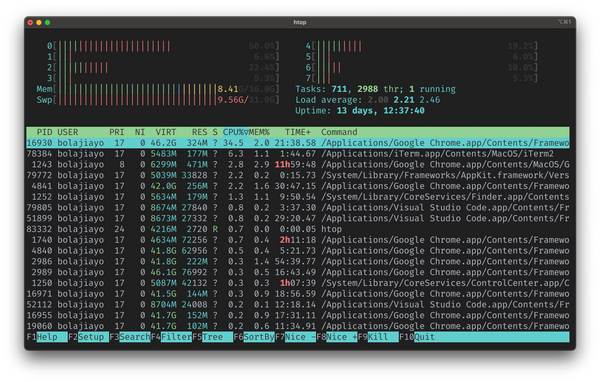
Each column displays a specific value that correlates with the process that is running. Top goes into even greater detail, down to a process-specific level.

as well as info on the amount of memory we have in total and available on the server. For example, we can see how long the system has been running, the average load, how many users are logged in, how many processes (tasks) are running, sleeping, etc.

It can look a bit cluttered, but a lot of this information is very useful. You can start ‘top’ by simply writing top on the command line.

It is included on both Debian-based and RedHat-based distributions and offers a variety of features to help you figure out what’s happening on your server. ‘top’ is a built-in tool designed to give an overview of all processes and services currently running on your machine. You can also use the ‘grep’ command to narrow down the results to a specific process name, process ID, and so on. When running this command, we are given details for each process currently running. You can use this in conjunction with the ‘less’ command to further improve readability. With one simple command, we can list a well-detailed list of currently running processes: It is a simple, fast tool designed to give quick results with no fuss. Short for ‘process status’, PS is a pre-installed utility designed to display information and details about processes. This will then output a set of information pertaining to that specific service, including the location of the process, whether or not the service is running, and even the last few lines of the log file from the service. You can then check the status on a process-by-process basis by entering the status command for a specific process: service status When this is used in combination with a search tool such as ‘grep’, finding specific services that are running is very easy to do. A ‘+’ symbol means the service is running, a ‘-‘ means that it is stopped, and a ‘?’ means that the status is not currently known. When you run this, an output similar to this will appear: apache-htcachecleanĪs you can see, a list of services is given as output, with a symbol to the left of the service’s name.

Using a simple command, we are given a complete list of services: service -status-all While its main purpose is to start and stop scripts and create processes, ‘service’ can also be used to see what services are running or stopped at any given moment. The ‘service’ command comes pre-installed with almost every Linux distribution out there. In this tutorial, we will go through several methods of listing/showing all running services and processes on a Linux-based server or machine, as well as go through some useful commands that will help you find and manage these processes and services.
See all running processes linux how to#
Because of possible cases like these, it’s good to know how to check and deal with such cases, as well as have the ability to monitor what processes and services are running on your machine at any moment. However, it may occur that a service can run without your knowledge, use up system resources, and even make your system vulnerable if security measures have not been taken into account.


 0 kommentar(er)
0 kommentar(er)
